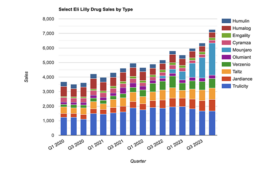What if the experimental subject in a longitudinal study could serve as its own control? Behold: the novel advantages of in vivo toxicology imaging.
|
The gross assumption of a controlled study of living subjects is that the controls are, for endpoint purposes, identical to the active treatment cohort. Unfortunately, it just ain’t so. Therefore, the ideal would be to do experiments where you could observe both the treated and untreated state within the same organism, and this is now increasingly possible with in vivo imaging.
‘We can use the same animal each time,’ says Kenneth Dunn, PhD, vice president of scientific development, INphoton, Indianapolis, Ind. ‘It serves as its own internal control. We typically open up the animal for imaging, then close it and return it to its cage. For rats, that’s not a big deal.’
Once open, Dunn is able to image his animals with fluorescence microscopy, a technique now coming into its own in preclinical toxicology. ‘Pharma executives know about PET and SPECT imaging, but it’s taken a while for them to appreciate the value of cellular and subcellular imaging that we can offer,’ he explains.
Indeed, INphoton, itself, has only recently come into being, after its founders at Indiana University developed their techniques of small animal, intravital imaging as part of a National Institutes of Health (NIH) grant. Once word of the technique spread, Dunn and colleagues were prompted to form INphoton to provide answers for a growing number of outside queries. ‘One company came to us with a drug that had great efficacy,’ Dunn relates, ‘but there was evidence that the drug wasn’t being cleared from the cell.’ The issue could not be tackled histologically because the drug can’t be fixed in tissue—a reality of many compounds. The only way it could be evaluated was with microscopy. ‘We added a fluorophore and watched it get internalized. And then, in 24 hours, it was cleared.’ The ultimate result? ‘The FDA was satisfied by our finding,’ he says.
The resolution of the technique can be astounding, and has obvious implications for preclinical toxicology. ‘We can correlate drug distribution with functional readouts,’ says Dunn—apoptosis, necrosis, mitochondrial injury—all the standard toxicological touch points. ‘The difference with this technique is a matter of figuring out how a car accident happened—we can go in and query which cells are dying, while they are dying, and get the precise chronology of the injury process.’
Picture perfect
Fluorescence microscopy does have its limitations. For instance, a fluorophore’s size may affect the pharmacokinetics of the agent to which it is linked, and the overall technique is not necessarily scalable; this not as true for SPECT (single photon emission computed tomography) or NanoSPECT, an innovation from the company Bioscan. ‘This is the first in a new generation of SPECT instruments for small animals,’ says Staf Van Cauter, executive vice president, Bioscan, Washington, D.C. ‘This has a resolution and volumes that are sub-microliter so that when you take a preclinical image of a mouse, you’re actually dealing with reconstruction volumes that are essentially the same as, or better than, what you’re dealing with in clinical images.’ That means it’s translatable—you can take the same imaging protocols into humans as the development of your drug moves forward.
NanoSPECT tracers do not have the same size limitations as fluorophores, and there is very little absorption of the emission by the body that’s being examined. ‘The targeting is very precise and finds its way out with very little scattering (and without surgery).’ However, in this case the image is of a higher magnitude, that being from whole organs rather than from specific cell types as described above.
|
A typical use for NanoSPECT in toxicology is to look at biodistribution and washout times, as well as longitudinal studies of tissue morphology. One such experiment facilitated by Bioscan was to look for kidney damage suspected to be caused by a radiotherapeutic. ‘We could look at it over time and see structural changes,’ says Van Cauter, adding that there are many tests of human organ function already available in nuclear medicine, which can carry over into animals.
Picture of health
Techniques have been recently developed to look at toxicological effects in another organ: the heart. Kathy Gabrielson, PhD, Johns Hopkins Medical Institutions, Baltimore, Md., uses ultrasound. ‘Ultrasound can tell you if the heart is enlarged. It can’t tell you if the cardiomyocytes are enlarged, but it can tell you if the wall itself is enlarged, or if the heart is contracting normally.’ As with the other in vivo techniques, animals can be imaged repeatedly, enabling long-term studies of atherosclerosis, or other signs of cardiovascular impairment.
Gabrielson was initially interested in the technique when a controversy arose regarding the use of doxorubicin with the breast cancer drug, Herceptin. Signals had emerged from the clinic that the combination, though highly effective, was cardiotoxic. Mice were administered the drugs, then 2D images were obtained of gross morphology. ‘Once we have that image, we can shift to another (higher resolution) modality called ‘M-mode’, which allows the capture of contractile motion over time,’ Gabrielson explains. These data can literally illustrate the presence and magnitude of compromised ejection fractions—a prime indicator of heart health.
Results from these investigations helped form the hypothesis explaining the adverse doxorubicin/Herceptin interaction. Though other markers of cardiotoxicity, as detected by ultrasound, are being considered, Gabrielson is currently using the technique to look at animal models of cardiovascular disease, and the effect of related therapeutic agents. She is, however, very enthusiastic about the use of imaging in preclinical toxicology and urges anyone with an interest to seek out one of the shared facilities created by the National Cancer Institute’s Small Animal Imaging Resource Project.
|
About the Author
Neil Canavan is a freelance journalist of science and medicine based in New York.
This article was published in Drug Discovery & Development magazine: Vol. 11, No. 12, December, 2008, pp. 22-24.
Filed Under: Drug Discovery






